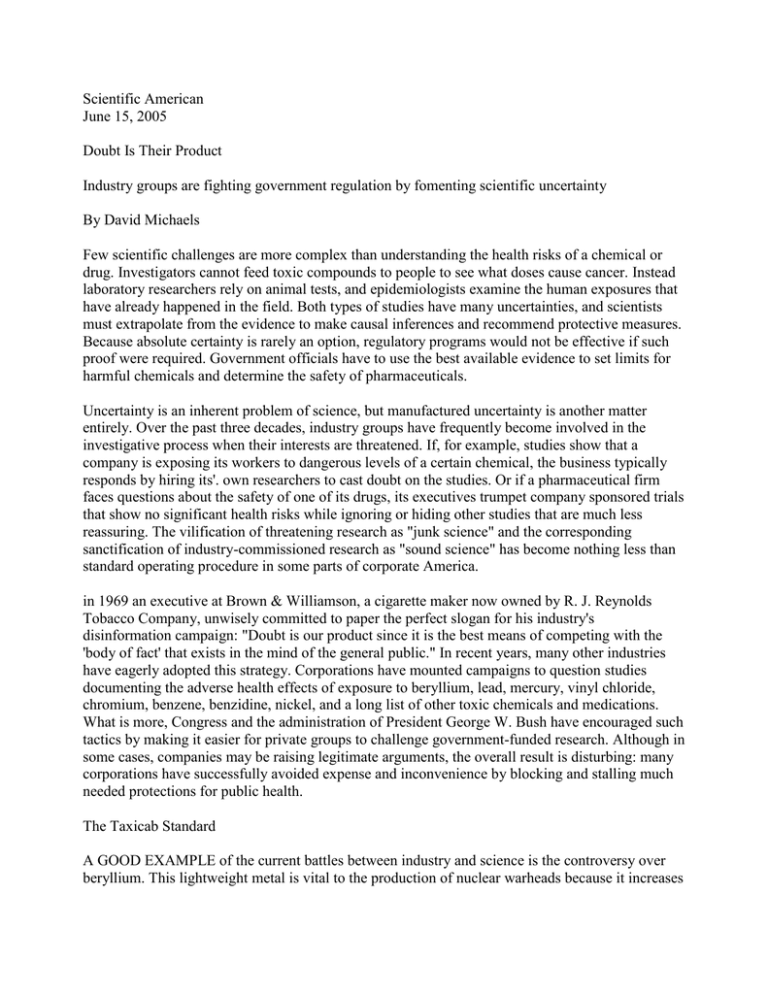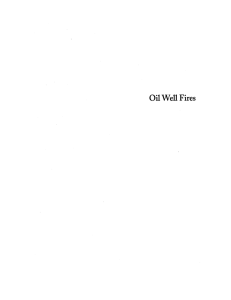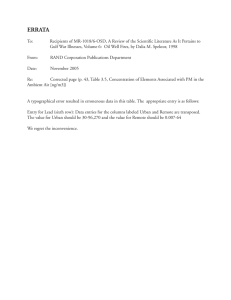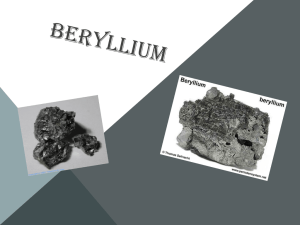Sci Am 2005;29:96-101
advertisement

Scientific American June 15, 2005 Doubt Is Their Product Industry groups are fighting government regulation by fomenting scientific uncertainty By David Michaels Few scientific challenges are more complex than understanding the health risks of a chemical or drug. Investigators cannot feed toxic compounds to people to see what doses cause cancer. Instead laboratory researchers rely on animal tests, and epidemiologists examine the human exposures that have already happened in the field. Both types of studies have many uncertainties, and scientists must extrapolate from the evidence to make causal inferences and recommend protective measures. Because absolute certainty is rarely an option, regulatory programs would not be effective if such proof were required. Government officials have to use the best available evidence to set limits for harmful chemicals and determine the safety of pharmaceuticals. Uncertainty is an inherent problem of science, but manufactured uncertainty is another matter entirely. Over the past three decades, industry groups have frequently become involved in the investigative process when their interests are threatened. If, for example, studies show that a company is exposing its workers to dangerous levels of a certain chemical, the business typically responds by hiring its'. own researchers to cast doubt on the studies. Or if a pharmaceutical firm faces questions about the safety of one of its drugs, its executives trumpet company sponsored trials that show no significant health risks while ignoring or hiding other studies that are much less reassuring. The vilification of threatening research as "junk science" and the corresponding sanctification of industry-commissioned research as "sound science" has become nothing less than standard operating procedure in some parts of corporate America. in 1969 an executive at Brown & Williamson, a cigarette maker now owned by R. J. Reynolds Tobacco Company, unwisely committed to paper the perfect slogan for his industry's disinformation campaign: "Doubt is our product since it is the best means of competing with the 'body of fact' that exists in the mind of the general public." In recent years, many other industries have eagerly adopted this strategy. Corporations have mounted campaigns to question studies documenting the adverse health effects of exposure to beryllium, lead, mercury, vinyl chloride, chromium, benzene, benzidine, nickel, and a long list of other toxic chemicals and medications. What is more, Congress and the administration of President George W. Bush have encouraged such tactics by making it easier for private groups to challenge government-funded research. Although in some cases, companies may be raising legitimate arguments, the overall result is disturbing: many corporations have successfully avoided expense and inconvenience by blocking and stalling much needed protections for public health. The Taxicab Standard A GOOD EXAMPLE of the current battles between industry and science is the controversy over beryllium. This lightweight metal is vital to the production of nuclear warheads because it increases the yield of the explosions; throughout the cold war, the U.S. nuclear weapons complex was the nation's largest consumer of the substance. Beryllium and its alloys are now used to make electronics equipment and even golf clubs. But the metal is also extremely toxic--breathing in tiny amounts can cause chronic beryllium disease (CBD), a debilitating ailment that scars the lungs. Victims have included not just the machinists who worked directly with the metal but others simply in the vicinity of the milling and grinding processes, often for very short periods. One accountant developed CBD after working for a few weeks each year in an office near where beryllium was being processed. CBD has also been diagnosed in people living near beryllium factories. As assistant secretary of energy for environment, safety and health from 1998 to 2001, I was the chief safety officer for the nuclear weapons complex, responsible for protecting the health of workers at production and research facilities as well as for safeguarding the surrounding communities and environment. When President Bill Clinton appointed me, the Department of Energy's exposure standard for beryllium had not changed since 1949, some years after the substance's health dangers had become clear. In response to a crisis involving many sick workers and community residents, two scientists working with the Atomic Energy Commission estimated what they thought to be a safe level--two micrograms of beryllium per cubic meter of air--while they were riding in a taxicab on their way to a meeting. The commission, the predecessor of the DOE, then implemented the so-called taxicab standard. When the Occupational Safety and Health Administration (OSHA) was established in 1971 to protect the health of workers in the private sector, it, too, adopted the taxicab standard for beryllium. Over the following decades, however, it became clear that workers exposed to beryllium levels well below the standard were falling sick. In the 1990s' the DOE and OSHA began the timeconsuming legal process of changing their exposure limits for beryllium. Brush Wellman, the nation's leading producer of the metal, hired Exponent, a Menlo Park, Calif., consulting firm specializing in product defense. Sharing authorship with Brush Wellman's scientists, these consultants wrote a series of papers suggesting it was possible that the size, surface area and number of beryllium particles may be more important than previously thought in the development of CBD. They also raised the hypothesis that skin exposure could play a larger role in disease risk. The consultants concluded that the current standard for beryllium might not be protective but that more research was required before changing it. After reviewing all the studies and taking testimony from industry and independent scientists, the DOE leadership in the later years of the Clinton administration decided that although more research is always desirable, the department had more than enough information to warrant immediate implementation of a stricter standard for beryllium. We issued a new rule, reducing the acceptable workplace exposure level by a factor of 10. Although we could not prove that the lower limit would eliminate the health risks, we chose a level that we believed would prevent most cases of CBD and that was also technologically feasible. This new standard, however, applies only to DOE workers; workers in the private sector, who fall under OSHA's umbrella, do not enjoy the same protection. In 1998 OSHA declared its intention to follow DOE's lead, but three years later the agency dropped that initiative. In November 2002 the agency implicitly accepted the industry's arguments by issuing a call for additional data on the relation of beryllium disease to, among other things, the size, surface area and number of particles and the extent of skin contact. That is where matters stand today. 2 As it happens, most scientists believe that beryllium also increases the risk of lung cancer; several studies conducted by epidemiologists at the Centers for Disease Control and Prevention support this conclusion. ]in 2002, however, statisticians from another product- defense firm, Roth Associates in Rockville, Md., and the University of Illinois published a reanalysis of a 10-year-old CDC study. By changing some key parameters, the authors raised the estimates for the background rate of lung cancer so that the elevation caused by beryllium was no longer statistically significant. (This procedure is rather easily accomplished, whereas the opposite--turning insignificance into significance--is extremely difficult.) Brush Weilman and NGK Metals, a producer of beryllium alloys, had funded the research. The new analysis was published in Inhalation Toxicology, a peerreviewed journal--not one primarily focused on epidemiology but peer-reviewed nonetheless--and the industry now touts its study as evidence that everyone else is wrong. This pattern is not unique to the beryllium industry. Many other companies that produce hazardous chemicals have hired researchers to dispute and reanalyze data showing adverse health effects. Their conclusions are almost always the same: the evidence is ambiguous, so regulatory action is unwarranted. Out of the almost 3,000 chemicals produced in large quantities (more than one million pounds annually), OSHA enforces exposure limits for fewer than 500. In the past 10 years the agency has issued new standards for a grand total of two chemicals; the vast majority of the others are still "regulated" by voluntary standards set before 1971, when the newly created agency adopted them uncritically and unchanged. New science has had no impact on them. I conclude that successive OSHA administrators have simply recognized that establishing new standards is so time- and labor- intensive, and will inevitably call forth such orchestrated opposition from industry, that it is not worth expending the agency's limited resources on the effort. Emphasizing uncertainty on behalf of big business has become a big business in itself. The productdefense firms have become experienced and successful consultants in epidemiology, biostatistics and toxicology. In fact, it is now unusual for the science behind any proposed public health or environmental regulation not to be challenged, no matter how powerful the evidence. Currently representatives of indoor tanning salons are hard at work disparaging the designation of ultraviolet radiation as a cause of skin cancer. Furthermore, the denial of scientific evidence and the insistence on an impossible certainty are not limited to business interests. For instance, some zealous environmentalists remain adamantly opposed to food irradiation--the use of gamma rays, x-rays or electron beams to kill microbes in meats and produce--even though the benefits of the practice greatly outweigh the risks. PPA and Vioxx THE POWER OF COMPANIES to influence and distort research is also strong in the pharmaceutical industry. Consider the Food and Drug Administration's belated clampdown on phenylpropanolamine (PPA), the over-the-counter drug that was widely used as a decongestant and appetite suppressant for decades. Reports of hemorrhagic strokes in young women who had taken a PPA-containing drug began circulating in the 1970s. Over the next 20 years, the FDA raised questions about PPA's safety, but the trade association representing the drug's manufacturers-including Bayer, Sandoz (now part of Novartis), Wyeth and GlaxoSmithKline--rejected the agency's concerns, employing scientists and lobbyists to keep PPA on the market. Eventually a 3 compromise was reached that allowed the companies to select an investigator and fund an epidemiological study whose design would be approved by both the manufacturers and the FDA. They chose the Yale University School of Medicine; in 1999 the study confirmed that PPA causes hemorrhagic stroke. Did the manufacturers withdraw the drug, which by then had annual sales of more than $500 million? No. Instead they turned to the Weinberg Group, a product-defense consulting firm based in Washington, D.C., to attack the study and had their attorneys put the researchers through grueling legal depositions. David A. Kessler, former head of the FDA and now dean of the University of California at San Francisco School of Medicine, said, "With the amount of hassle and harassment that [the Yale scientists] had to endure, I'm sure the next time they're asked to undertake something like this, they'll wonder if it's worth the cost." The FDA finally advised manufacturers to stop marketing PPA in November 2000. The agency estimates that the chemical caused between 200 and 500 strokes a year among 18- to 49-year-old people. Or consider rofecoxib, more commonly known as Vioxx, the once popular pain reliever made by Merck. Even before the FDA approved Vioxx in May 1999, the agency had reviewed data suggesting that the drug could increase the risk of heart disease. Several independent scientists (that is, ones not on Merck's payroll) also raised red flags, but for the most part the FDA ignored them. Then, in early 2000, the results of a clinical trial showed that participants who took Vioxx for an average of nine months had five times the risk of heart attack as those taking the comparison painkiller, naproxen (sold under the brand name Aleve). Merck's scientists faced a 'dilemma. They could interpret this finding to mean either that Vioxx increased heart attack risk by 400 percent or that naproxen reduced the risk by an astounding 80 percent, making it about three times as effective as aspirin in protecting the cardiovascular system. Unsurprisingly, the :company's researchers chose the latter interpretation. But Merck abruptly turned ablaut and took Vioxx off the market last September when another trial found that: participants taking the drug for more than 18 months suffered twice as many heart attacks and strokes as those taking a placebo. One FDA analyst estimated that Vioxx caused between 88,000 and 139,000 heart attacks--30 to 40 percent of which were probably fatal--in the five years the drug was on the market. Although the Wall Street Journal has reported that certain documents suggest that Merck executives were aware of the increased risk of heart attacks, it is hard to imagine that the company's scientists were deliberately promoting a drug they knew was unsafe. At the same time, it is hard to imagine they honestly thought naproxen reduced the risk of heart attack by 80 percent. If they did, they should have urged the government to pour it straight into the water supply. It seems more likely that their allegiances were so tightly linked with the products they worked on, as well as the financial health of their employers, that their judgment became fatally impaired. And the FDA? That agency has neither the legal authority nor the resources to effectively identify the adverse outcomes caused by drugs already on the market. As a result, civil lawsuits have become the primary means for protecting the public from unsafe drugs and chemicals. Recent rulings of the U.S. Supreme Court, however, have made it harder for plaintiffs to introduce scientific testimony to support their cases. Under the precedents set by 4 Daubert v. Mertell Dow Pharmaceuticals and two related rulings, federal trial judges are now required to determine whether the testimony is reliable and relevant. What began as a wellintentioned effort to improve the quality of scientific evidence has had troubling consequences: according to an analysis published in 2002 in the Journal of the American Medical Association, federal judges have barred respected researchers from testifying in drug lawsuits because their evidence--such as medical case reports and toxicological studies on animals-did not meet the strict new standards. Corporate defendants have become increasingly emboldened to challenge any expert testimony on the grounds that it is based on "junk science." INDUSTRY GROUPS have tried to manipulate science no matter which political party controls the government, but the efforts have grown more brazen since George W. Bush became president. I believe it is fair to say that never in our history have corporate interests been as successful as they are today in shaping science policies to their desires. In 2002, for example, the Bush administration remade a committee that advises the CDC on the issue of childhood lead poisoning. Secretary of Health and Human Services Tommy Thompson replaced prominent researchers with individuals more likely to side with the lead industry. (One new member had testified on behalf of the lead paint industry in a suit brought by the state of Rhode Islatid to recover the costs of treating children with lead poisoning and cleaning contaminated homes.) Since then, the CDC has not moved to strengthen the federal standards for lead poisoning despite research showing that even very low levels of lead in the blood can sharply reduce a child's IQ. What is more, this administration has tried to facilitate and institutionalize the corporate strategy of manufacturing uncertainty. Its most significant tool is the Data Quality Act (DQA), a midnight rider attached to a 2001 appropriations bill and approved by Congress without hearings or debate. The DQA authorized the development of guidelines for "ensuring and maximizing the quality, objectivity, utility, and integrity of information." This sounds harmless, even beneficial; who wouldn't want to ensure the quality of government- disseminated information? In practice, however, industry groups use the DQA to slow or stop attempts at regulation by undercutting scientific reports. The law gives corporations an established procedure for killing or altering government documents with which they do not agree. It has been used by groups bankrolled by the oil industry to discredit the National Assessment on Climate Change, a federal report on global warming; by food industry interests to attack the World Health Organization's dietary guidelines, which recommend lower sugar intake to prevent obesity; and by the Salt Institute to challenge the advice of the National Institutes of Health that Americans should reduce their salt consumption. Even better for industry would be a way to control information before it becomes part of an official government document. To accomplish this tantalizing goal, in August 2003 the Office of Management and Budget (OMB) rolled out a new proposal entitled "Peer Review and Information Quality." Under the plan, all covered information would undergo some form of peer review before being issued by a government agency, and any information that might affect major regulations or that could have a "substantial impact" on public policies or private-sector decisions would be put through a cumbersome system in which the information was reviewed by experts independent of the agency. Because the proposed peer-review process would exclude all scientists receiving grants or contracts from the agency, it seemed designed to maximize the ability of corporate interests to manufacture and magnify scientific uncertainty. 5 Enough was enough. In November 2003 the usually quiescent science community finally rose up in protest at a meeting sponsored, at the OMB's request, by the National Academy of Sciences. In the face of this opposition--dozens of organizations fired off scathing letters to the White House--the OMB retreated and implemented a less onerous program that did not exclude the most qualified scientists from the peer-review process. A new regulatory paradigm is clearly needed, but the Bush administration is heading in the wrong direction. Instead of encouraging industry groups to revise the reports of government scientists, agencies should be focusing more scrutiny on the data and analyses provided by corporate scientists and product-defense firms. And instead of allowing uncertainty to be an excuse for inaction, regulators should return to first principles: use the best science available but do not demand certainty where it does not exist. A good example of such an approach is the program to provide compensation for weapons workers sickened after exposure to radiation or chemicals at DOE sites. (I helped to design the initiative, which was enacted by Congress in 2000.) Because it is impossible to definitively determine whether a particular cancer has been caused by radiation exposure, the program estimates probabilities based on the cancer rates among survivors of the nuclear blasts at Hiroshima and Nagasaki. The model is not perfect, but the estimates are as accurate as the available data and methods allow. In that case, we did the right thing. Now it is time for industry to do the right thing. We need a better balance between health and money. DAVID MICHAELS is an epidemiologist who served as the U.S. Department of Energy's assistant secretary for environment, safety and health from 1998 to 2001. He is currently professor and associate chairman in the department of environmental and occupational health at the George Washington University School of Public Health and Health Services. Copyright 2005 Scientific American Inc. 6


